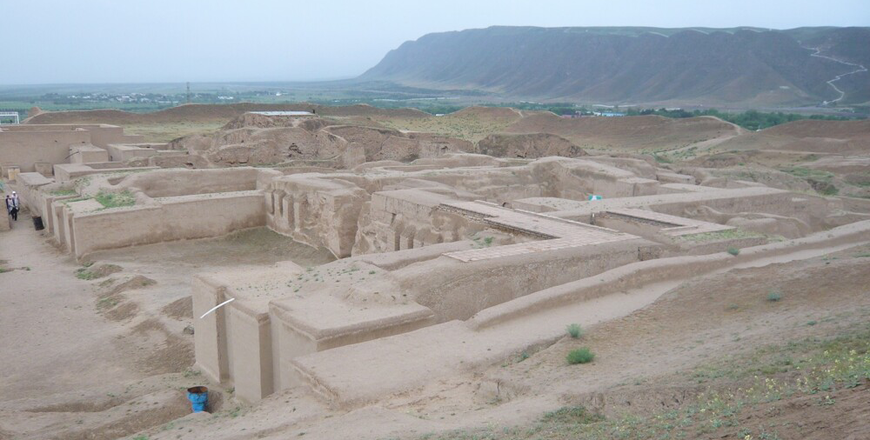AMMAN — The military tactics of the ancient world included mounted archers and Parthian and Armenian ones used the rhombus formation in a battle.
Historians and Classicists claim that the information comes from variety of Greek and Roman sources. Arsacid dynasty ruled both Parthia and Armenia and Plutarch testify that the Armenians were similarly equipped and fought like the Parthians.
Greek military theoreticians from the 3rd and 4th centuries AD – Asclepiodotus, Aelian and Arrian-wrote in their treatises about the advantages the rhombus formation (manoeuvrability in combat and the fact that it had leaders placed on all four corners of the formation).
"It could face threats from any direction and the mounted archers could also easily shoot backwards. It is not known with absolute certainty if the heavy cavalry cataphracts were also deployed as rhomboids, but this is very likely on the basis of the extant descriptions of combat and because the Iranian and Armenian cataphracts were also simultaneously equipped with bows," said historian Ilkka Syvanne, adding that, it is very likely that they could also use the traditional Persian square or oblong formation when needed, but the use of the rhombus would seem to have been the preferred array when the cavalry force was deployed as a single line, its main advantages in that case being an ability to penetrate enemy formations while its flanks and rear could also be used to face enemies.
On the basis of the military manuals (Asclepiodotus, Aelian, Arrian), it is apparent that the rhombus formation had been invented by the Thessalians with the implication that the Parthians had probably copied it from some Thessalian cavalry units that had been stationed in the east during the Seleucid rule, Syvanne speculated, noting that in contrast to the traditional wedge formation used by all other nomadic “Scythian” neighbours of the Parthians, the use of the rhombus gave the Parthians the advantage of being able to face threats also arising from the rear and flanks, if their scattered units of mounted archers were suddenly ambushed from behind.
In addition, if the Parthians could induce their enemies to follow them, the widely separated rhombi could immediately engage their foes from either the flank or rear.
The great variety of nations, subjects and tribes that made up the Parthian realm makes it certain that whenever the Parthians took to the field in the company of these that there would have been equally many different types of unit orders and types of units as there were these different nationalities and tribes.
"We can therefore expect that the Parthian cavalry, with its subjects, clients and allies, included all of the unit varieties that we know to have existed in antiquity so that there would have been light-cavalry archers and javeliners [e.g. Sacae, Indians and Arabs], medium cavalry lancers [e.g. Arabs, Iberians, Albani and Kurds], and cataphracts [e.g. Armenians, Arabs, Sacae, Albani, Parthians, Medes, and Persians] who would have employed the rhomboid, square, oblong and wedge arrays depending on nationality and type of unit," Syvanne elaborated.
The Parthian kingdom was ethnically heterogeneous state, with different types of infantries and cavalries.
The ancient scribe Dio maintained that the Parthians used only small numbers of lightly-equipped archers. It is quite probable that Dio is correct as far as the Parthians proper are concerned, but it is still clear that their subjects and allies included units equipped in the traditional Persian, Median and Middle Eastern styles ranging from the light to medium infantry (slingers, archers and spearmen with large shields), and also Greek style hoplites and pikemen in those areas which had Greek/Macedonian settlers.
In addition to this, the Parthians got some Roman style infantry units that had been formed out of the prisoners and deserters, the historian said, adding that the greatest boost to their strength took place when, a result of the defeat of Niger by Septimius Severus, the former’s followers fled to Parthia.
"The medium to heavy infantry units employed the close order and phalanx formation when fighting in the open terrain, but in difficult it naturally adopted the open order.
The light infantry was always arrayed in such a manner that it could employ their weapons in the most efficient way. The role of the infantry, however, was limited because in practice because the Parthians seem to have used their cavalry for the field battles and their infantry only in sieges or in difficult terrain," Syvanne underlined.
For centuries, the Romans and the Parthians wage military campaigns against each other and even though it was not highlighted like the cavalry and infantry, the Parthians possessed naval units.
According to Tacitus, and not unnaturally, the feudal forces disliked intensely the long distance campaigns. It was the Roman emperors tried to copy Alexander the Great and mimic his campaigns to Persia and India.
The conquest of Iran would have had four advantages for the emperors: The achievement of this goal would have increased their prestige among the soldiers and populace; The Romans would have gained complete control of the trade routes from Rome to India and China; The destruction of Parthia would have removed the most formidable enemy and would have given Romans access to its cavalry forces and taxes; It would have increased the Roman prestige vis-à-vis all the powers surrounding it and beyond, Syvanne underscored.
